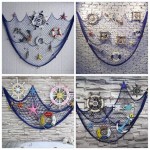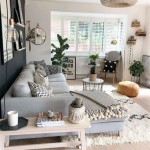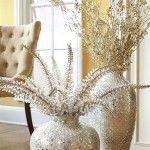Moroccan Inspired Home Decor: A Guide to Infusing Exotic Elegance
Moroccan inspired home decor has gained considerable popularity in recent years, captivating homeowners and interior design enthusiasts alike. The allure stems from its rich tapestry of colors, intricate patterns, and opulent textures. This style embodies a blend of Berber, Arabic, and European influences, resulting in a unique and visually striking aesthetic. Incorporating Moroccan elements into a home can transform ordinary spaces into luxurious and inviting havens.
A major appeal of Moroccan decor lies in its versatility. It can be adapted to suit various architectural styles and personal preferences. From minimalist apartments to sprawling villas, touches of Moroccan flair can enhance the ambiance and create a welcoming atmosphere. The key is understanding the core principles and elements that define the style, allowing for informed and creative implementation.
Key Point 1: The Power of Color and Pattern
Color plays a crucial role in Moroccan design. Earthy tones like terracotta, sand, and ochre create a warm and grounding foundation. These neutral shades are often contrasted with vibrant jewel tones such as sapphire blue, emerald green, ruby red, and amethyst purple. These bolder colors evoke a sense of luxury and exoticism, drawing inspiration from the vibrant landscapes and bustling marketplaces of Morocco.
Pattern is equally important in achieving a Moroccan aesthetic. Geometric mosaics, known as zellige, are a signature element. These intricate tile patterns adorn walls, floors, and fountains, adding a layer of visual complexity and artistry. Other common patterns include arabesque designs, incorporating flowing lines and floral motifs. These patterns can be found on textiles, such as rugs, cushions, and curtains, further enhancing the visual richness of the space.
The specific application of color and pattern should be considered carefully. Overuse of bold colors can overwhelm a space. Instead, it's advisable to use neutral tones as a backdrop and incorporate vibrant colors as accents. Similarly, while intricate patterns are desirable, a balanced approach is crucial. Combining different patterns requires a keen eye to ensure they complement each other rather than clash. A large, patterned rug can serve as a focal point, while smaller patterned cushions and accessories can add subtle touches of visual interest. The key is to create a cohesive and harmonious balance.
Beyond traditional paint and tile, color and pattern can be introduced through other materials. Stained glass windows, for example, can cast colorful light patterns onto the walls, creating a mesmerizing effect. Wood carvings, often painted in vibrant colors, can be used to adorn doors, windows, and furniture. Metalwork, particularly brass and copper, can feature intricate patterns that add a touch of sophisticated elegance. These diverse applications demonstrate the adaptability of color and pattern in Moroccan decor.
Key Point 2: Textures and Materials: Embracing Natural Elements
Texture is a defining characteristic of Moroccan interior design. The incorporation of natural materials is paramount. Textiles like wool, silk, and cotton are used extensively, adding a sense of comfort and luxury. Thick, hand-woven rugs, often adorned with geometric patterns, provide warmth and softness underfoot. Cushions, poufs, and throws made from plush fabrics create inviting seating areas.
Wood is another essential material in Moroccan decor. Carved wooden screens, known as mashrabiya, provide privacy while allowing light and air to flow through. Wooden furniture, often inlaid with mother-of-pearl or bone, adds a touch of opulence. Natural wood finishes, such as dark stains or varnishes, enhance the warm and earthy ambiance.
Metalwork plays a significant role in adding texture and visual interest. Brass and copper lanterns, trays, and decorative objects are common elements. These metallic accents reflect light and create a warm glow, adding to the inviting atmosphere. The intricate designs and patterns often found on metalwork further enhance the visual richness of the space. Wrought iron is also frequently used for furniture frames, decorative elements, and window grilles, adding a touch of rustic elegance.
The use of natural textures extends beyond fabrics, wood, and metal. Terracotta tiles, often laid in intricate patterns, provide a durable and visually appealing flooring option. Plaster walls, typically finished with a textured coating, add depth and dimension. Even natural elements like plants and flowers can contribute to the overall textural richness of the space. Palm trees, ferns, and other leafy plants can bring a touch of the outdoors inside, adding to the exotic ambiance.
When selecting materials, it's important to consider their durability and maintenance requirements. Natural materials like wool and wood require proper care to maintain their beauty and longevity. Regular cleaning and protection from moisture are essential. Similarly, metalwork may require polishing to prevent tarnishing. Choosing quality materials and implementing proper maintenance practices will ensure that the Moroccan inspired decor remains beautiful and inviting for years to come.
Key Point 3: Lighting and Ambiance: Creating an Intimate Atmosphere
Lighting is crucial in creating the desired ambiance in Moroccan inspired homes. The emphasis is on soft, diffused light, which creates a warm and inviting atmosphere. Harsh, bright lights are generally avoided. Instead, the focus is on creating a layered lighting scheme that incorporates a variety of light sources.
Moroccan lanterns are a signature lighting element. These lanterns, often made from brass or copper and adorned with intricate patterns, cast beautiful shadows and create a romantic glow. They can be hung from the ceiling, placed on tables, or mounted on walls. The intricate patterns etched into the metal allow light to filter through, creating a mesmerizing effect.
Candles are another important element in Moroccan lighting. They add a touch of intimacy and romance to any space. Candles can be placed in lanterns, on tables, or in decorative holders. The flickering candlelight creates a warm and inviting ambiance, perfect for relaxation or entertaining.
In addition to lanterns and candles, other light sources can be incorporated to create a layered lighting scheme. Wall sconces, for example, provide subtle ambient lighting. Table lamps, often with fabric shades, can be used to illuminate specific areas. Recessed lighting can be used to highlight architectural features or artwork. The key is to combine different light sources to create a balanced and harmonious lighting scheme.
The color temperature of the light is also important. Warm white light, with a color temperature of around 2700K, creates a cozy and inviting atmosphere. Cool white light, with a color temperature of around 4000K or higher, can feel harsh and sterile. Choosing the right color temperature will help to create the desired ambiance. Dimmers can also be used to adjust the intensity of the light, allowing for further control over the ambiance.
Beyond the practical aspects of lighting, it's also important to consider the aesthetic appeal of the light fixtures. Choosing lanterns, sconces, and lamps that complement the overall Moroccan style will enhance the visual coherence of the space. The light fixtures should be viewed as decorative elements in their own right, contributing to the overall opulence and elegance of the design.
By carefully considering color, pattern, texture, materials, and lighting, it is possible to create a Moroccan inspired home that is both beautiful and functional. The key is understanding the core principles of the style and adapting them to suit individual preferences and architectural constraints. The final result should be a space that is warm, inviting, and reflective of the rich cultural heritage of Morocco.

Moroccan Interior Design Ideas For Your Home Designcafe
:max_bytes(150000):strip_icc()/4-tips-for-buying-the-perfect-moroccan-rug_1000x-8e7612ad47c544cdaab48d9cc6d2dd3d.jpeg?strip=all)
11 Moroccan Inspired Decor Ideas

Moroccan Interior Design Ideas For Your Home Designcafe

Moroccan Style Interior Design

Moroccan Home Decor Ideas Mediterranean Living Room Los Angeles By Badia Design Inc Houzz

The 16 Best Moroccan Decor Examples Mostbeautifulthings Living Room Inspired

Inspiration Morocco The New York Times

Moroccan Decor Ideas For Home

5 Simple Ways To Add Moroccan Decor In Your Home Roofandfloor Blog








